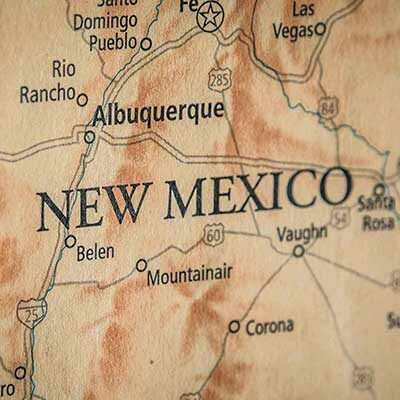Study shows 200 million Americans drinking PFAS-tainted water
Laura Paskus
October 20, 2020
A new study published in the peer-reviewed journal, Environmental Science and Technology Letters estimates that 200 million Americans could have PFAS in their drinking water at levels of one part per trillion or more.
PFAS, or per- and polyfluoroalkyl substances, are a family of toxic substances that have contaminated groundwater in and around at least two communities in New Mexico—Clovis and Alamogordo—from the use of firefighting foams at Cannon and Holloman Air Force bases. In February, EPCOR, the private utility that runs Clovis’s water system, said it found low levels of PFAS in some of its intake wells.
The U.S. Environmental Protection Agency (EPA) set a lifetime health advisory for PFAS at 70 parts per trillion, though independent studies say safe levels are closer to one part per trillion.
In Millis, Massachusetts, after the toxic chemicals were found in drinking water this month, the D’Angelis Water Treatment plant was taken offline. According to the story, “Three of Millis’ six wells tested close to 20 parts per million at the time of the presentation.” That’s one million times more polluted the parts-per-trillion measurement we’re used to seeing with PFAS. Massachusetts recently passed more strict controls than the EPA’s lifetime health advisory and set the acceptable level for PFAS in drinking water at 20 parts per trillion. The Milford Daily News has a helpful primer on the chemicals and what the tests mean.
In New Hampshire, a health study delayed by COVID-19 has resumed—to look at the blood of people who worked or attended school at Pease Interational Tradeport in Portsmouth, N.H., or who relied on a private well in Newington. According to the story in the Union Leader: “The tradeport formerly served as an Air Force base and it is believed chemicals used then leaked into the drinking water, which is how families such as the Amicos became exposed to PFAS years later.” The testing project was spurred by Testing for Pease, a community action group co-founded by Andrea Amico.
Soil and water testing have also resumed at a site in Pownal, Vermont where PFAS contaminated soil, groundwater, and surface water. The former industrial site—which had been previously owned and leased by various companies, including one that manufactured and processed wire—was bought in 2015 by someone planning to open a seasonal ice cream shop. The new owner had started moving forward with permits and plans to drill a well, and according to the story in the Bennington Banner, that’s when Glen Matunas learned that the former Warren Wire/General Cable factory had contaminated local groundwater with PFAS.
According to a new report from the Minnesota Pollution Control Agency, PFAS have been found in the St. Croix River, which is protected as a Wild and Scenic River.
In Wisconsin, 34 community and environment groups are asking the state to require that public drinking water systems test for PFAS. And the Wisconsin Department of Natural Resources is ordering Tyco Fire Products to test ponds near its property for PFAS. According to the story in the Milwaukee Journal Sentinel:
Tyco was also instructed to expand its testing to fish harvested from other private and public waterways in Marinette and Peshtigo, the release said. That includes fish found in "Ditch B," which is located near the fire technology center and has shown elevated levels of PFAS compounds this year.
Though elevated levels of a PFAS compound were found in some of the samples that were analyzed by Tyco, the DNR will not issue a fish consumption advisory because the ponds where the fish were harvested aren't public. If elevated levels of PFAS show up in fish from any public areas, though, a fish consumption advisory may be put into place for those water bodies, the release said.
If you’ve been affected by PFAS contamination in your community here in New Mexico, call our tip line at (505) 433-7242. To read more coverage of PFAS in New Mexico visit “Groundwater War: New Mexico’s Toxic Threat,” which includes a timeline of events and studies on PFAS.







[…] As we noted earlier this year, a study published in the peer-reviewed journal, Environmental Science and Technology Letters estimates that 200 million Americans could have PFAS in their drinking water at levels of one part per trillion or more. […]